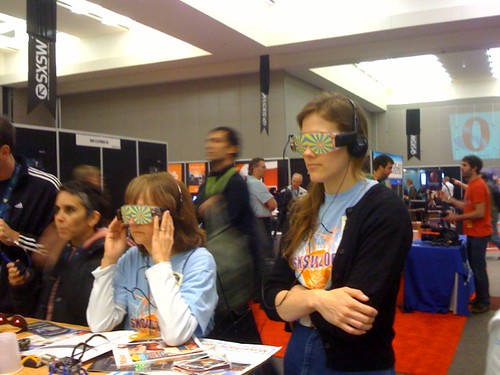A new study by Intuit predicts that the past will become the future. We’re heading into the Age of the Artisan. The press release has a great lede:
Artisans, historically defined as skilled craftsmen who fashioned goods by hand, will re-emerge as an influential force in the coming decade.
Now, we’re not talking about people making crafts by hand in some log cabin. The New Artisan is likely to be a web developer, writer, photographer, designer, marketing consultant or other independent professional. Powered by social networking tools and an always-on net, they’ll be able to work anywhere, for anyone.
The tools are getting easier and easier for new artisans, lowering the barriers to their work and eliminating many of the gatekeepers that once kept them from the market. In addition to the machine of democratization that is the internet, today’s artisan has a wealth of tools available to them:
- Writers can easily self-publish their books on Lulu and sell them worldwide.
- Photographers can use Flickr to market themselves and sell the stock photography through istock.
- Designers can market their creations on CafePress, without having to keep any merchandise on hand.
- Marketing professionals can find clients on LinkedIn
- And teams of people can collaborate using Backpack and Google Docs.
While there’s a certain amount of hyperbole in this study, particularly in its prediction of the end of the Industrial Revolution, this is an idea that largely rings true. There’s no reason for large groups of people to travel by carbon-spewing vehicles to sprawling office parks where they’ll occupy beige cubes for giant corporations as they put in eight hours a day.
That’s the Cubicle Economy, where you’re judged not necessarily by the quality of your work but, often, by less concrete measures, like whether you’re a “team player” or your facility at office politics. Or, sometimes, by a very concrete measure – the “face time” you put in the office.
I’ve worked for large organizations most of my career. In all cases, creative people (like myself) have challenges in adapting to to the Cubicle Economy. If you’re creative, you want to create, whether it’s a brochure, a web site or a party. You want a tangible product. Yet, so much effort in the Cubicle Economy is spent around process – meetings, timesheets, required briefings, politics, showing up on time. Is it any wonder that creative people have problems in the Cubicle Economy?
At the beginning of my career, as I transitioned from school to the Cubicle Economy, I felt hopelessly restless and bored. Was the problem with me? Maybe I had ADD.
Working on web sites saved me from being driven crazy by the Cubicle Economy. Having a concrete thing to work on, to update, a creation that was constantly changing but was reaching real people – that was something I could point at, a creation that made the rigors of the Cubicle Economy worthwhile.
The Artisan Economy would not only be a more efficient way to run a business, it would be friendlier to human needs and more conducive to creative work. I, and millions of other members of the Cubicle Economy, would welcome it.

